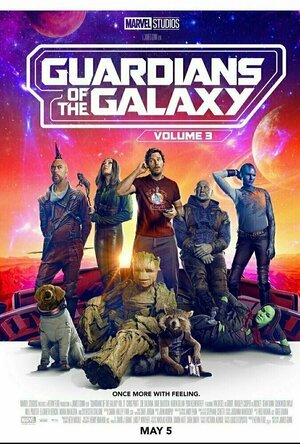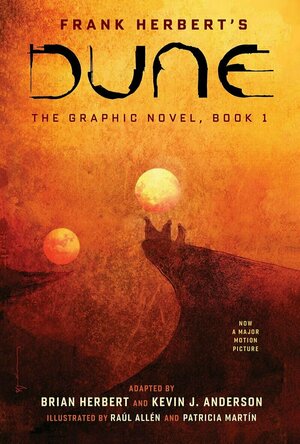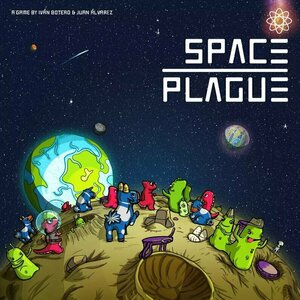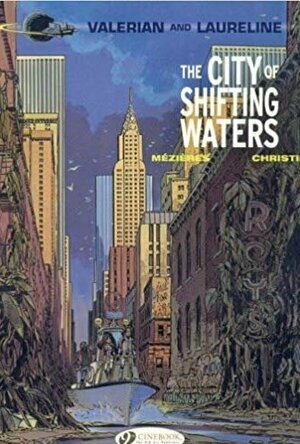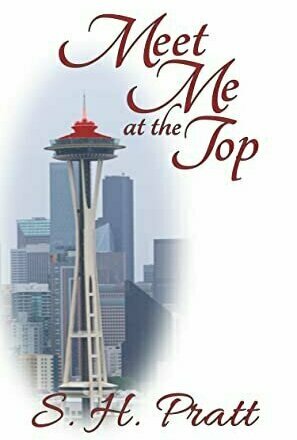
Meet Me at the Top
Book
When a movie touches your heart, sometimes you just need to take a tour. Alice Davies, a Sleepless...
Contemporary Romance Sweet Novella
David McK (3649 KP) rated Guardians of the Galaxy Vol. 3 (2023) in Movies
Jul 2, 2023
I had no clue what to expect, and did wonder how the space-faring sheenanigans would fit into the (then) relatively grounded MCU.
Groot stole to show.
Guardians of the Galaxy, Vol 2, in 2017?
That belonged to Yondu "he may be your father, kid, but he certainly wasn't your daddy".
Both of those films largely revolved around Chris Pratt's Star-Lord and Zoe Saldana's Gamora.
Volume 3 - again helmed by James Gunn, after a period where he was in Disney's black book due to some old, now deleted, tweets - moves away from that (although it does form one of the sub-plots, following the events of Endgame), instead focusing more on Bradley Cooper's Rocket Raccoon, exploring his (somewhat harrowing) origins as a disposable experiment by the so-called High Evolutionary.
This, IMO, is quite possibly the best Marvel movie since "No Way Home".

Wild Child of the Monsoons
Book
A collection of lyrical poetry that savours the myriad of emotions that life gifts us. Wild Child...
poetry bookbuzz
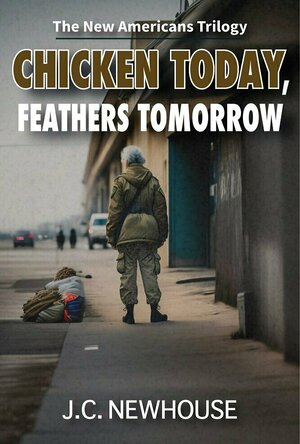
Chicken Today, Feathers Tomorrow
Book
Hiding from the Russian army in a shelled-out house in southern Ukraine, Mike Lacondeguy comes...
Magic Realism Russian History
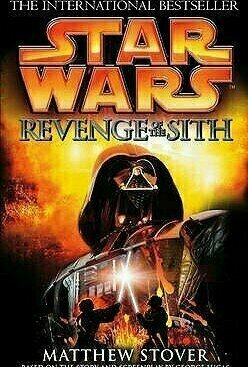
Star Wars: Episode III: Revenge of the Sith
Book
The turning point for the entire Star Wars saga is at hand. . . .As combat escalates across the...
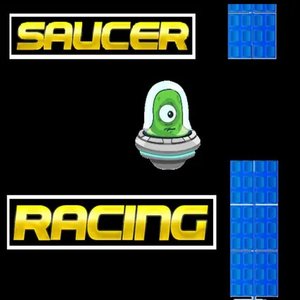
Saucer Racing
Entertainment and Games
App
Fly your UFO through the gaps in the satellites, don`t crash or it is over. This Game is easy to...
David McK (3649 KP) rated Dune: The Graphic Novel, part 1 in Books
Mar 6, 2022
My only frame of reference is the 2021 movie.
Oh, I knew the basics prior to that: Spice, the giant worms, space politics, but beyond that ... ?
Released in the wake of that movie, this is - apparently (or so the authors say) - a straight visual retelling (as much as is possible) of Frank Herbert 1965 epic, rather than putting their own stamp on it.
Never having read that original, I'm in no position to say whether it is or not.
What I will say, however (if it is) then so is the 2021 movie, although there are distinct visual differences between the two mediums.
This also ends in a different place, slightly earlier than the movie, with Paul and Jessica alone in the desert and before their run-in with the Fremen.
So, yes, engaging if dragging slightly in parts and well set-up for the release of Part 2 in Autumn 2022 ...
Purple Phoenix Games (2266 KP) rated Space Plague in Tabletop Games
Mar 9, 2021
Space Plague is a new game from first time designers who hail from the country of Colombia. In it players assume the command of a race of aliens attempting to colonize a newfound planet before the other races assume majority. Each race is essentially the same, and have similar tactics, but may use these tactics differently from other races. The player who amasses the most plagues from their race by the time the game ends will be crowned champion, and settler of the new world.
DISCLAIMER: We were provided a prototype copy of this game for the purposes of this review. These are preview copy components, and I do not know for sure if the final components will be any different from these shown. Also, it is not my intention to detail every rule in the game, as there are just too many. You are invited to download the rulebook, back the game through the Kickstarter campaign, or through any retailers stocking it after fulfillment. -T
To setup, follow the instructions, as there are many steps for setup. Once complete, the game should look similar to the photo below. You will see in this photo the main board at the top, the circular world core board (in black and red), and individual board setups for three players. Of course, for this review I will be playing the purple faction: The Flat-Earthers (not that I agree with the actual group of Flat-Earthers). Each player receives the same components, just in their player color. This includes six action cards to serve as the opening hand.
Each round follows four phases: Planetary Deck, Play Action Cards, Planetary Event, and March. On the main board a Planetary Event Card is flipped at the start of each round. This will inform the players which terrain type will generate energy this turn, as well as give a glimpse into the future event that will occur once the card travels to the activation zone on the board. Once players have placed energy shards onto the requisite terrain tiles they must each choose one card to be played this turn from their hand. As each player has the same six beginning Action Cards turns may seem similar. These action cards include Producing Plague (placing a plague disc on the space furthest from the end of the terrain tile line, on top of the picture of the player’s spaceship), Producing a Captain (a stronger version of the normal plague disc), Fast Movement (allows plague discs to move twice toward the core or two discs to move one space each), Slow But Steady (allows one plague disc to move forward one space OR allows the player to place a shield disc on top of a plague to protect it from harm), and Evolving OR Getting Lucky (which allows the player to purchase an Evolution Card from the Market or to roll the energy die and place energy shards on the resulting terrain type). More action cards can be purchased at the Market and used on future turns in order to buff certain actions, abduct opponent plagues, or even create new types of plagues with special abilities.
Once all players have played and resolved their action card for the round the Planetary Event phase begins. If an event card has moved its way to the activation zone of the main board its event text is resolved now. These events signify death of plague discs if they reside on specific terrain types, allow for purchasing cards at the Market or else destroying the plague furthest toward the core, or other various and nefarious events.
When the event has been resolved the active player token is passed to the next player and the March phase ensues. Players will move each of their plague discs one space toward the core to make room for more incoming plagues and captains.
Once the final event card has made its way through each of the main board slots and past the activation zone the game will end. Players will count their plague discs that made it onto the core of the planet and the player with the most discs will win! The rules also include several tie-breakers, ending with a shared victory and a snarky, “tough toothpaste,” style of comment.
Components. Again, this is a prototype copy of the game, and components are not at all final. However, component quality aside, this game looks amazing on the table and hints at some really excellent plans for the final aesthetic. The character art and art on the cards is cartoony, but not in a bad way, and the other art in the graphic design is just stellar (checks around the room for the hook). The game feels “spacey” and “alieny” but also hip and lighthearted. I like it. I like it a lot. My hope for the final product is that the rulebook gets much more detailed, as I had to ask several questions to the designer that just were not clear or present in the rules. I am also hoping that the cards themselves will see quite a bit of beefiness added to them, as this prototype copy shipped with mega-thin cards that are delicate to handle. For a prototype, the components are good and show me what could be upon a successful Kickstarter campaign.
The gameplay is definitely something I want to discuss. I was blown away by how much fun I had playing this game! I cannot count how many times I vocalized how impressed I was with the design and how much fun I was having. I love the mechanic of giving all players the same components but allowing them to choose how to use them best for their strategies. Sometimes I felt that I need to flood my track with plagues and get them moving, while other times I wanted to just upgrade my race by using the evolution cards from the market. Those evolution cards are so interesting to use because they can change the course of the game, especially if specific cards come out near the beginning of the game.
Players can choose which world they wish to conquer at the start of each game (five were included with this copy), and each world possesses different strategies of play. That said, Space Plague definitely scores points for replayability from us.
While it was difficult to get into at first (remember all the rules questions I had), once I was able to truly learn the game it became so enjoyable, and everyone I have played with has thoroughly enjoyed it. If this is the style of game we can expect to come out of Colombia and Bamboo Studios in particular, I am very excited for the future and for the board game community as a whole. This one is a gem and I cannot recommend it highly enough. If you are looking for something a little kooky but with great art and super fun play, then it’s a no-brainer. Space Plague is a must-play at the very least.
EmersonRose (320 KP) rated The City of Shifting Waters (Valérian and Laureline, #1) in Books
Nov 20, 2019
The Valerian and Laureline comics follow Valerian, a handsome and cocky time and space traveler, and Laureline, his stubborn and beautiful partner. They travel together across space and time on missions for Galaxity, the capital of the Terran Empire in the 28th century. They explore strange worlds with fascinating creatures, deal with complicated political situations, and take the reader through rewritten history.
I immediately fell in love with the comics for the same reasons I enjoyed the film. The first is that the world that author Pierre Christin and artist Jean-Claude Mezieres created is truly fantastical. It falls under the same sci-fi mixed with fantasy genre that Star Wars is under. The great space galaxy is full of planets that are home to a wide range of alien species, each with complicated politics, cultures, and aesthetics.
The second reason is that I love the relationship between Valerian and Laureline. I am a very character driven person in both my reading and writing so I am a sucker for a good relationship, romantic, familial, or friendship. Valerian and Laureline start the first comic playing chess. Valerian is cocky and does not like to lose, but he is kind and smart and works hard to make the world a better place. Laureline is funny, stubborn, and unlike Valerian, she does not feel the same sense of loyalty to the Terran Empire and therefore is okay with bending the rules to save the most people. They make for a great team, and their fun banter adds to the overall charm of the story.
7810429The first issue of the series was released in 1967 and ran till 2010. Initially, all were written in French but has since been translated into English and several other languages. This series plays with a lot of the sci-fi/fantasy tropes that make you fall in love with stories in the genre, and has even been compared to Star Wars as the basis for several of the ideas used in the Star Wars films, such as the look of some of the characters and situations characters find themselves in.
This is a fun and exciting comic series that got me into reading101694 comics in the first places. I will certainly be continuing my reading of these books so that I can continue being apart of the Valerian and Laureline story. I also enjoyed the film and hope that the passion the Luc Besson showed will be enough to allow him to make another film in the series.
I would highly recommend this series!

Feng Shui Life Compass
Lifestyle and Health & Fitness
App
Navigate the world of Feng Shui with this easy-to-use authentic App. Follow the Focus Compass as it...
